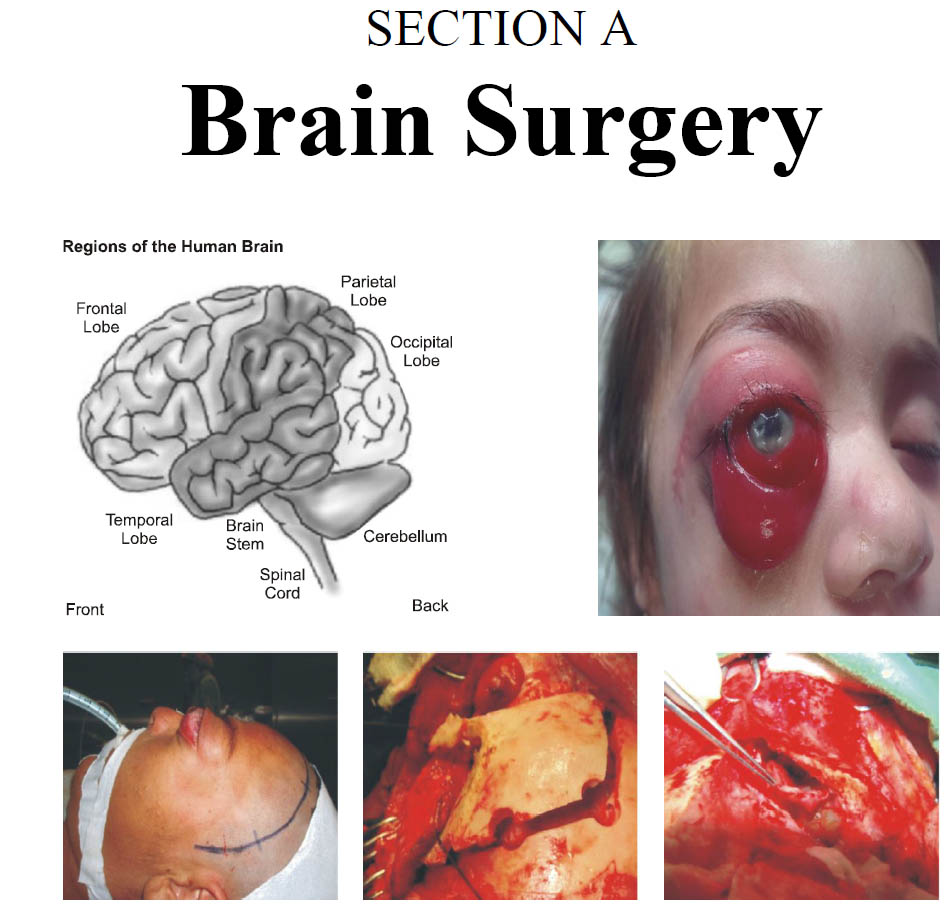Midline Posterior Fossa Tumors in Young Adults: Evolution of Thought and Practice
DOI:
https://doi.org/10.36552/pjns.v24i3.431Keywords:
Posterior fossa tumors, Medulloblastoma in pediatric population, EpendymomaAbstract
Objective: The aim of our study was to evaluate the surgical outcome of posterior fossa lesions and to find out the relation between surgical skill and post-operative outcome and to determine how evolution in surgical skill dictates post-operative outcome.
Material & Methods: This was a retrospective analysis of 207 patients with midline posterior fossa lesions over a period of 10 years from Jan 2009 till December 2018. The degree of surgical outcome was assessed by degree of surgical resection, Post-operative neurological deficits and complications, Stay in ICU and duration in hospital.
Results: 207 Midline posterior fossa tumors were operated. Headache was leading symptom in patients followed by vomiting and balance problem. Medulloblastoma was a most common pathology in 133, Ependymoma 32, Astrocytoma in 28 Choroid Plexus Papilloma in 3, dermoid cyst 3,arachnoid cyst 4 and Hemangioblastoma in 4 patients. Gross Total resection was possible in 110 patients. Post operatively gag reflex was impaired in 36 and facial palsy in 5 patients. Chest infection was the most common complication in 84 patients, followed by wound infection, CSF Leak and Meningitis. Mortality was 11.59% as 24 patients died within one month, while 28.5% patients stayed in ICU.
Conclusion: Post-operative mortality and morbidity is relatively high among post fossa tumors. Improvement in surgical skills better instruments revealed better outcome over a period of 10 years due to better understanding of microsurgical anatomy and utilization of modern therapeutic strategies for resection.
References
2. Kerleroux B, Cottier JP, Janot K, Listrat A, Sirinelli D, Morel B. Posterior fossa tumors in children: Radiological tips & tricks in the age of genomic tumor classification and advance MR technology. J Neuroradiol. 2020;47(1):46?53. doi:10.1016/j.neurad.2019.08.002
3. Brell M, Ibáñez J, Caral L, et al. Factors influencing surgical complications of intra-axial brain tumors. Acta Neurochir (Wien) 2000;142:739-50.
4. Winston K, Gilles FH, Leviton A, Fulchiero A. Cerebellar gliomas in children. J Natl Cancer Inst. 1977;58:833–8
5. Voth, D., Schwarz, M. & Geißler, M. Surgical treatment of posterior fossa tumors in infancy and childhood: techniques and results. Neurosurg. Rev. 16, 135–143 (1993). https://doi.org/10.1007/BF00258246
6. O’Brien DF, Caird J, Kennedy M, Roberts GA, Marks JC, Allcutt DA. Posterior fossa tumours in childhood: Evaluation of presenting clinical features.
7. Reza, Md & Haroon, Kaisar & Zannat, Rawzatul & Barua, K. (2017). Histopathological Profile of Posterior Cranial Fossa Midline Tumors in Children. 6. 40-42.
8. Cushing H. Experience with the cerebellar medulloblastoma: Critical review. Acta Pathol Microbiol Immunol Scand
9. Muzumdar, Dattatraya & Deshpande, Amit & Kumar, Ratnesh & Sharma, Ankur & Goel, Naina & Dange, Nitin & Shah, Abhida & Goel, Atul. (2011). Medulloblastoma in childhood-King Edward Memorial hospital surgical experience and review: Comparative analysis of the case series of 365 patients. Journal of pediatric neurosciences. 6. S78-85. 10.4103/1817-1745.85717.
10. Douglas Cochrane D, Gustavsson B, Poskitt K, P, Steinbok P, Kestle J, R, W: The Surgical and Natural Morbidity of Aggressive Resection for Posterior Fossa Tumors in Childhood. Pediatr Neurosurg 1994;20:19-29. doi: 10.1159/000120761
11. Dubey, Arvind et al. “Complications of posterior cranial fossa surgery--an institutional experience of 500 patients.” Surgical neurology 72 4 (2009): 369-75 .
12. Agarui PH, Plese JP, Ciquini O, et al. Transient mutism following a posterior fossa approach to cerebellar tumors in children: a critical review of the literature. Childs Nerv Syst 1995;11:306-10.
13. Black P. Cerebrospinal fluid leaks following spinal or posterior fossa surgery: use of fat grafts for prevention and repair. Neurosurg Focus 2000;9:e4
14. Khalil, Ayman et al. “Unilateral abducens and bilateral facial nerve palsies associated with posterior fossa exploration surgery.” Journal of surgical case reports vol. 2016,3 rjw028. 6 Mar. 2016, doi:10.1093/jscr/rjw028
15. Aravabhumi, S et al. “Brainstem auditory evoked potentials: intraoperative monitoring technique in surgery of posterior fossa tumors.” Archives of physical medicine and rehabilitation vol. 68,3 (1987): 142-6.
16. Slotty, Philipp J., Amr Abdulazim, Kunihiko Kodama, Mani Javadi, Daniel Hänggi, Volker Seifert, and Andrea Szelényi. "Intraoperative neurophysiological monitoring during resection of infratentorial lesions: the surgeon's view". Journal of Neurosurgery JNS 126.1: 281-288

Downloads
Published
Issue
Section
License
The work published by PJNS is licensed under a Creative Commons Attribution-NonCommercial 4.0 International (CC BY-NC 4.0). Copyrights on any open access article published by Pakistan Journal of Neurological Surgery are retained by the author(s).












